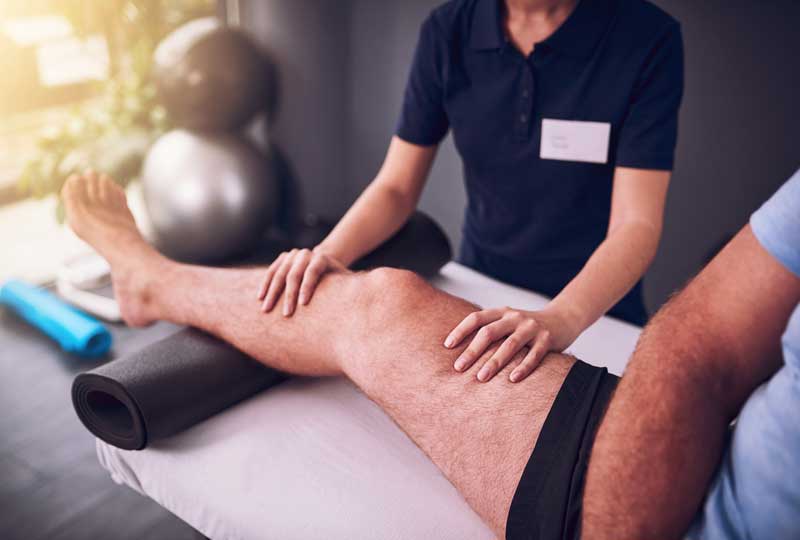If you have knee, hip, shoulder or other joint pain, physical therapy for osteoarthritis can help.
Osteoarthritis affects more than 32.5 million adults in the U.S. It can occur because of genetics, a lack of movement, joint damage or repetitive motion. And it’s also more common as people age. Osteoarthritis can impede mobility and cause pain, stiffness and swelling. But physical therapy can help protect your affected joints and ease discomfort. Plus, regular movement can stave off a worsening of the condition.
“We can strengthen those muscles surrounding the joint itself to help give you more support and alter the load so that there’s less irritation,” said Breanna Choffin Schmitt, DPT, at Vanderbilt Orthopaedics. “And we can reduce the pain and improve function overall. As physical therapists, we’re not changing what the joint looks like, but we’re changing patients’ quality of life.”
Physical therapy for osteoarthritis goals
A physical therapist will evaluate your movement to observe any range-of-motion restrictions. For example, if your shoulder is bothering you, the therapist will check if you can raise your arm over your head. The therapist will also look for muscle weaknesses and ways you might be compensating. Next is developing a customized treatment plan. The first step of a treatment plan, Choffin Schmitt said, typically involves increasing the flexibility and range of motion of a specific joint. The next step is developing muscle strength.
“Initially, we begin strengthening the muscles above the joint, below the joint, and just getting everything around it a little bit stronger,” she explained. “Then we work on overall aerobic exercise or cardiovascular exercise to get a better activity tolerance to be able to move better now that you have the strength around that joint.”
Physical therapy commitment
At Vanderbilt, patients typically see their physical therapists for 30-minute appointments one to two times per week for several weeks, Choffin Schmitt said. They also receive a list of exercises to do on your own at home between appointments. And over the course of treatment, the goal is to develop a consistent routine to carry forward in life after PT is complete.
“It’s important that the patient is consistent with doing the exercises,” she explained, “because arthritis doesn’t just go away. It can flare up and calm back down.” That’s why Choffin Schmitt likes to encourage patients to think of the movements as lifelong exercises.
Tailor-made programs
Not only is a treatment plan tailored to your specific needs based on the type of osteoarthritis you have and how it’s affecting your body, but it’s also tailored to your specific mobility goals.
“We want to make sure that we give the patient an exercise routine that they’re going to be able to be consistent with,” Choffin Schmitt said. “If their goal is to get back to picking up their kids or playing with their grandkids, then we’re going to make sure exercises are around that specific movement.”
Joint protection
Physical therapy and exercise in general are often the first lines of defense against joint pain and worsening osteoarthritis. Through muscle strengthening and mobility improvement, physical therapy may even help prevent or reduce your chances of having joint replacement surgery in the future.
“Through research,” Choffin Schmitt explained, “we know that moderate levels of exercise are believed to be protective against further development of osteoarthritis. We do have good research to support that we can prevent further worsening conditions.”

Need help?
Vanderbilt Physical and Occupational Therapy can help you heal and regain function for all conditions requiring physical and occupational therapy, including osteoarthritis.

